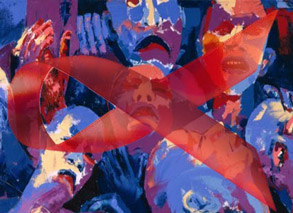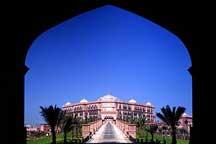 Apr. 10, 2025
Apr. 10, 2025
Weather
The Tartar ethnic minority
2009-08-07 11:40 BJTCustom
Most Tatars in cities live in flat-roofed mud houses equipped with flues for heating. They like to hang tapestry inside their homes, which are usually very clean and tidy. Courtyards planted with flowers and trees have the appearance of small gardens. The Tatars in pastoral areas have adapted to a nomadic life, and live in tents.
Tatar cuisine, popular in Xinjiang, includes various kinds of pastries. At festivals, they serve pastries called "Gubaidiai" and "Yitebailixi," the former being cured with cheese, dried apricots and rice, and the latter with pumpkin, meat and rice. Both kinds have crisp crusts and soft contents. Tatar drinks include beer-like "keerxima," made of fermented honey, and "Kesaile" wine brewed from wild grapes.
Tatar men usually wear embroidered white shirts under short black vests or long gowns. Their trousers are also black. They often wear small black-and-white embroidered caps, and black fur caps in winter. Women wear small flowery caps inlaid with pearls, and long white, yellow or purplish red shirts with pleats. Their jewelry includes earrings, bracelets and necklaces of red pearls. Since liberation, more modern styles have influenced both men's and women's clothing, and a growing number of Tatars are now wearing Western style clothes.
Most of Tatars in cities belong to small monogamous families. Sons and daughters live apart from their parents after they get married, but they still support their parents until they die, showing great respect for their elders. Intermarriages between Tatars and other ethnic groups believing in Islam are quite common. Marriages between cousins occur but are uncommon.
A wedding is held at the bride's home in accordance with religious rules. The newlyweds must drink sugar water from the same cup, symbolizing a long sweet life together. Usually, the groom must live for some time at his parents-in-law's home, and in some families, must not go to his own home until the first child is born.
Babies receive a formal religious blessing three days after birth, and their names are usually taken from the Islamic classics. A child usually takes the surname of father or grandfather. The cradle rites are held seven weeks later, with the cradle and clothes provided by a grandmother.
Forty days after the child's birth, he or she is bathed in water fetched from 40 places, a custom intended to bring about healthy growth. When a person dies, the body is shrouded with white cloth in conformity with Islamic practice.
The cultural life of the Tatars is rich and colorful. Their music has a lively rhythm, and several musical instruments are used, including the "Kunie" (a wooden flute), the "Kebisi" (a kind of harmonica) and a two-stringed violin. Tatar dances are lively and cheerful. Men use many leg movements, such as squatting, kicking and leaping.
Women move their waists and arms more. Their dance styles incorporate features of the Uygur, Russian and Ozbek dances, but also have their own unique characteristics.
At festivals, the Tatars often hold mass dancing contests. "The Plough Head Festival" every spring is an annual grand gathering, held usually at beautiful scenic spots, and includes such collective games as singing, dancing, wrestling, horse racing and tug-of-war.
The game they enjoy most is the "jumping walk" contest. All contestants hold an egg on a spoon in their mouths. The first to reach the finishing line without dropping the egg is the winner. Tatar drama began developing earlier than those of most other ethnic groups in Xinjiang. By the early 1930s, a Tatar drama troupe had been set up and began giving performances in Ining, Tacheng and Urumqi.
Editor: Zhang Wen | Source: People's Daily Mail
Mail Share
Share Print
Print


 Video
Video









 2009 China Central Television. All Rights Reserved
2009 China Central Television. All Rights Reserved